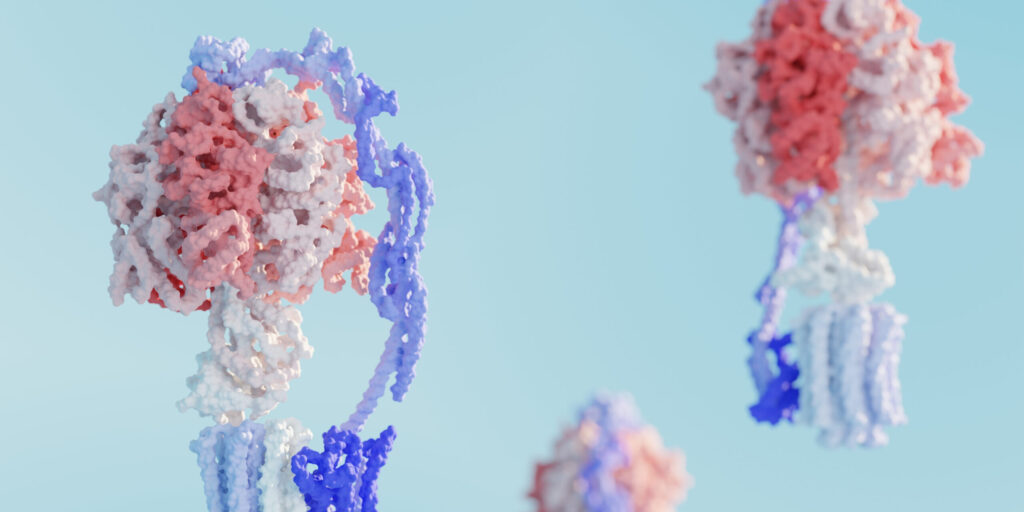
Simply Stated: Oxidative Stress
By MDA Staff | Friday, March 31, 2000
5 Second Summary
“Simply Stated” is a Quest column designed to explain some terms and basic facts about neuromuscular diseases.
Find more at Mdaquest.org/tag/simply-stated
Every day we’re bombarded with information about foods that contain “antioxidants” and supplements that block “free radicals.” But where do free radicals come from and why should we block them? Is there a connection between free radicals and neuromuscular disease?
Oxygen: The double-edged sword
The oxygen we breathe is needed by our cells to create energy. In fact, the very work “oxygen” has come to mean something that is vital for existence. But this life-giving gas also has a dark side.
Although most of the oxygen used by our bodies to create energy is incorporated into harmless water molecules, up to 2 percent may be spun off into our cells as highly charged, destructive molecules called free radicals, or reactive oxygen species.
These charged molecules are inherently unstable and constantly strive to achieve balance by stealing electrons from neighboring molecules. In turn, molecules that have had their electrons stolen become destabilized and continue the cycle of vengeance by stealing electrons from their neighbors.
This process, known as oxidation, is the same type of chemical reaction that causes iron to rust, and it can wreak havoc on cell membranes, proteins and genetic material. Although all this may sound ominous, under normal circumstances, our cells have built-in mechanisms for neutralizing free radicals.
But when these systems get disrupted or overwhelmed, a cell may suffer from oxidative stress, and the resulting damage may kill the cell or render it cancerous.
The disease connection
Signs of oxidative stress have been linked to a number of diseases (either as a cause or a symptom), including cancer, cataracts, Alzheimer’s disease and heart diseases. Some researchers even think that aging is due to the effects of slowly accumulated genetic damage caused by free radicals.
In addition, there’s evidence that oxidative stress plays a prominent role in three types of neuromuscular disorders: amyotrophic lateral sclerosis (ALS), mitochondrial/metabolic disease and Friedreich’s ataxia. In each case, researchers suspect that aberrant cellular chemistry causes the muscle or nerve cells to produce excess free radicals, or to lose the ability to neutralize free radicals. It’s not clear in any case, however, whether oxidative stress is the main cause of symptoms or merely a symptom itself.
In other types of neuromuscular disorders, there’s less evidence that oxidative stress is a problem, although some researchers have speculated that it might play a role in Duchenne and Becker muscular dystrophies.
Preventing oxidative stress
Our cells have many strategies for neutralizing free radicals. These tend to fall into one of two categories: special proteins made by the body called enzymes (with names like superoxide dismutase and catalase) that help incorporate free radicals into inert molecules; or small nonprotein molecules that are able to accept extra electrons without becoming destabilized themselves (this category includes vitamin E and coenzyme Q10). Both types of substances are known as antioxidants.
Although enzymes can be powerful antioxidants, researchers studying oxidative-stress-linked diseases are still searching for ways to deliver these specialized proteins to cells. Strategies include persuading cells to make more enzymes, or modifying the enzymes so that they can be taken up by cells after injection into the bloodstream.
Antioxidants of the small, nonprotein type are sold over the counter in the form of vitamins and supplements and some are found in foods. Although there’s evidence that some of these may help prevent diseases like cancer, it’s less clear whether this type of antioxidant can actually stop or reverse a disease process that has already begun.
Recently, coQ10 has been shown effective in slowing the course of ALS in mice with the disease. (Human trials are currently under way at Columbia University in New York.) Very preliminary studies indicate that idebenone (a form of coQ10) seems to improve heart conditions in people with Friedreich’s ataxia.
Despite many studies, there’s no overwhelming evidence that antioxidants are effective in mitochondrial or metabolic disorders, but they’re usually prescribed on the theory that they “can’t hurt.”
If you have a different type of neuromuscular disease or if you don’t have a neuromuscular disease, the choice as to whether to take over-the-counter antioxidants is up to you. Most aren’t harmful if taken in reasonable amounts but you should first discuss the idea with your doctor. Some people believe they’re worth taking for potential anti-cancer or anti-aging benefits, but these benefits are still in question.
Common Sources of Antioxidants
- Vitamins E, C, A*, and riboflavin and niacin* (forms of vitamin B)
- Supplements: Coenzyme Q10, idebenone (a form of coQ10), selenium* (a mineral)
- Foods: Phytochemicals (leafy green vegetables), lycopene (cooked tomatoes), polyphenols (green tea), vitamin C (citrus fruits), and beta carotene* (carrots)
*Can be toxic in large quantities
“Simply Stated” is a Quest column designed to explain some terms and basic facts about neuromuscular disease.
Next Steps and Useful Resources
- MDA’s Resource Center provides support, guidance, and resources for patients and families, open clinical trials, and other services. Contact the MDA Resource Center at 1-833-ASK-MDA1 or ResourceCenter@mdausa.org
- For more information about MDA Care Centers and other services can be found here.
- To learn more about clinical study opportunities, visit clinicaltrials.gov
- Stay up-to-date on Quest content! Subscribe to Quest Magazine and Newsletter.
Disclaimer: No content on this site should ever be used as a substitute for direct medical advice from your doctor or other qualified clinician.




